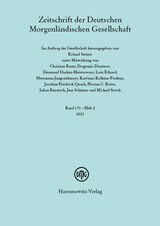Autor: Volker Olles
- «
- 1
- »
Die Suche erzielte 3 Treffer.
Verborgene Tugend: Liu Yuan über Laozi. Teil V einer Reihe kommentierter Übersetzungen von fünf Inschriften aus der Liumen-Tradition in der daoistischen Anthologie Chongkan Daozang jiyao research-article
Die Halle der Drei Reinen und der Pavillon der Acht Trigramme. Teil IV einer Reihe kommentierter Übersetzungen von fünf Inschriften aus der Liumen-Tradition in der daoistischen Anthologie Chongkan Daozang jiyao research-article
- «
- 1
- »
